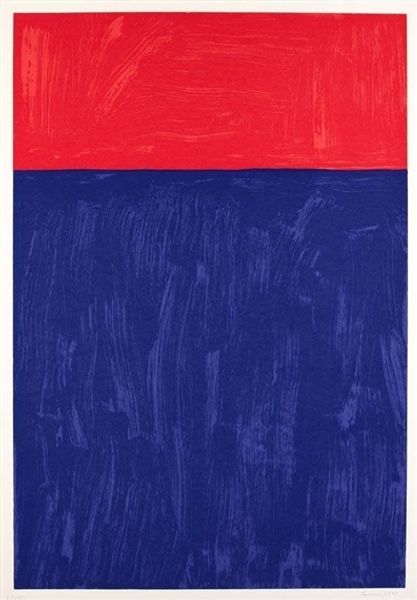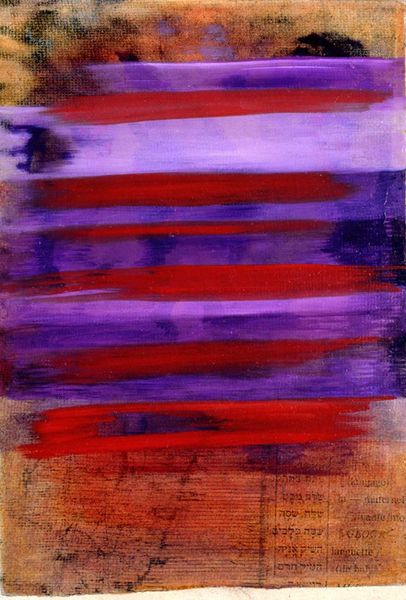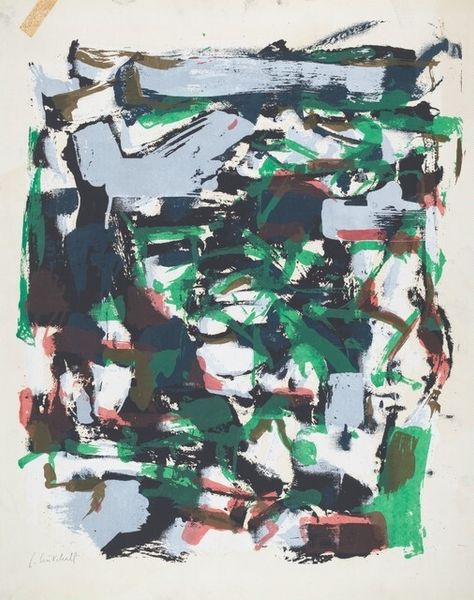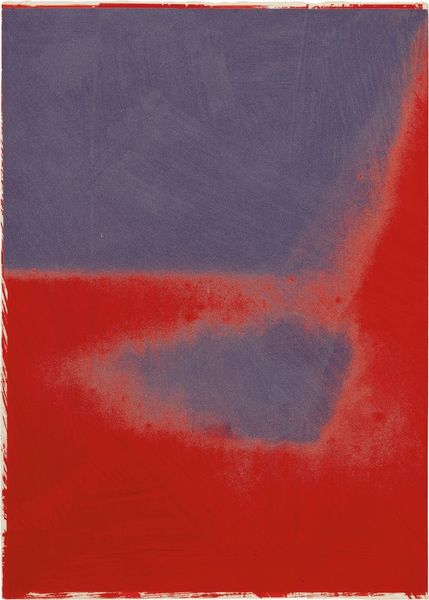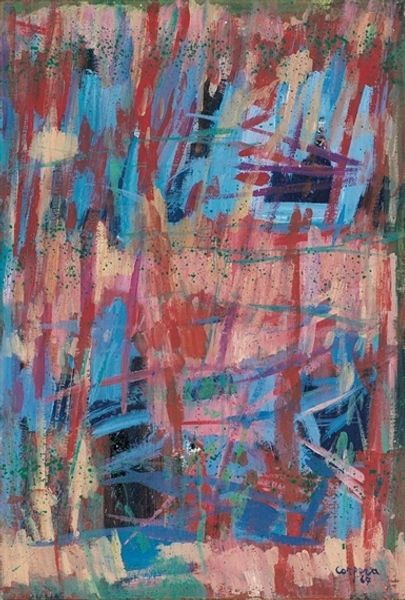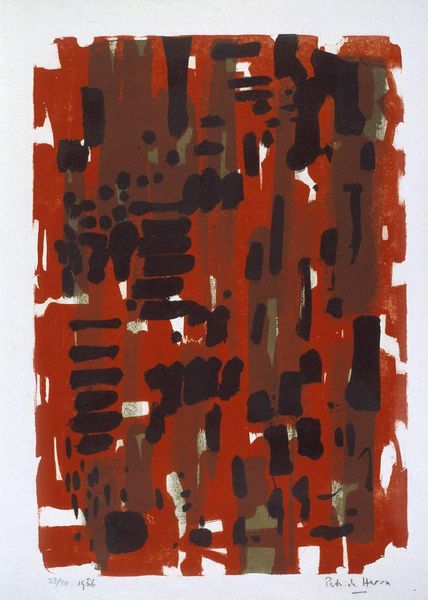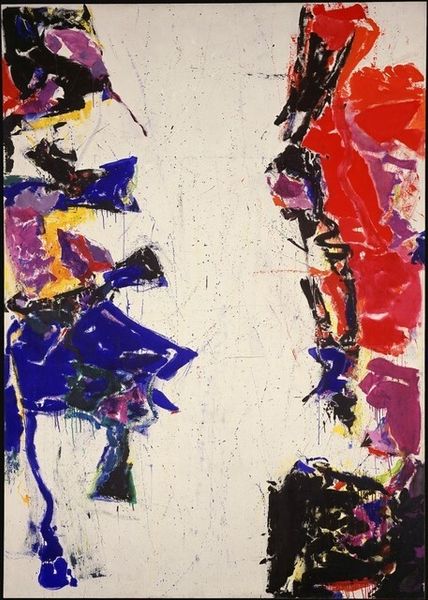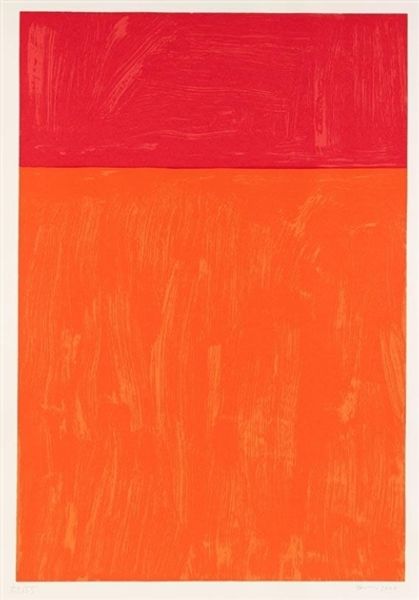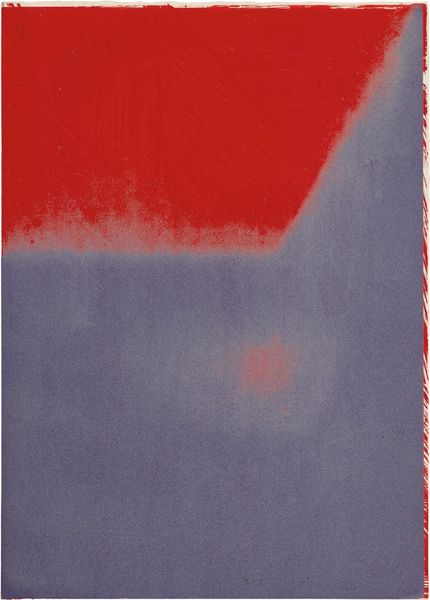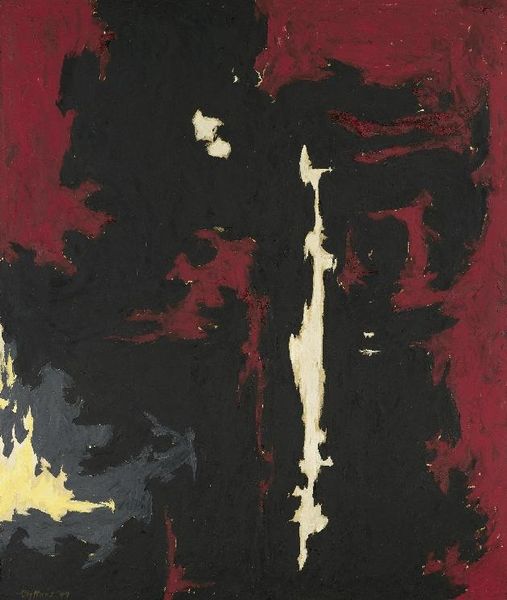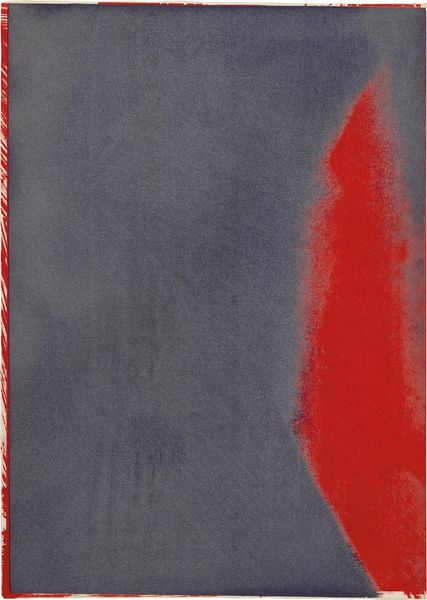
acrylic-paint, gestural-painting
#
abstract-expressionism
#
abstract painting
#
acrylic-paint
#
gestural-painting
#
acrylic on canvas
#
abstraction
#
line
#
modernism
Dimensions: overall: 32.8 x 25.6 cm (12 15/16 x 10 1/16 in.)
Copyright: National Gallery of Art: CC0 1.0
Curator: Right, let’s delve into Jack Tworkov's "L.Pa. No.1" from 1961. It's a striking example of his abstract expressionist phase, acrylic on canvas. Editor: My initial impression is pure energy—a raw, almost violent slash of red against this cool blue. It feels like a primal scream rendered in paint. What were your thoughts? Curator: Well, Tworkov, post World War II, like many artists, was grappling with existential questions. He wanted to express the unspeakable, the emotions words failed to capture. Abstraction became the language. Editor: Absolutely. The red slashes definitely carry weight. Considering it’s the early 60s, it feels incredibly charged with socio-political tension. Like the energy is barely contained on the canvas. Do you see any specific art movements reflected? Curator: Certainly Abstract Expressionism dominates, specifically with Tworkov’s emphasis on gestural painting. The spontaneity is calculated though, he spent a long time developing this particular style. And then there's a push/pull influence from modernism as well. I wonder how he managed to balance the spontaneity with thoughtful consideration. Editor: Interesting. What stands out to me is that, even though it’s clearly non-representational, I can't help but see a figure trapped behind bars— or something else fighting against constraint. Curator: That's fascinating! I can see that. This piece emerged from a period where there was this urgent call to abandon artistic conventions and seek true innovation and expression. The intensity with which these brushstrokes have been applied just captures this push towards artistic revolution. Editor: Thinking about it, perhaps its location also gives context. Tworkov taught at Yale - at the heart of social issues and counter-culture trends in that era. That blue field seems like a societal calm interrupted, challenged… Curator: Yes, very astute observations. And even though “Abstract Expressionism” is thrown about often to describe many artworks, to dismiss his painting, as purely aesthetic would negate what he, and those within his social circle, were fighting for at the time. Editor: Well, regardless, "L.Pa. No. 1" definitely ignites something primal and urgent. A vital record of a turbulent time. Curator: I agree. And as you have pointed out so astutely, these strokes act as visceral signals of this time in society, and remain as culturally poignant today as they did then.
Comments
No comments
Be the first to comment and join the conversation on the ultimate creative platform.
